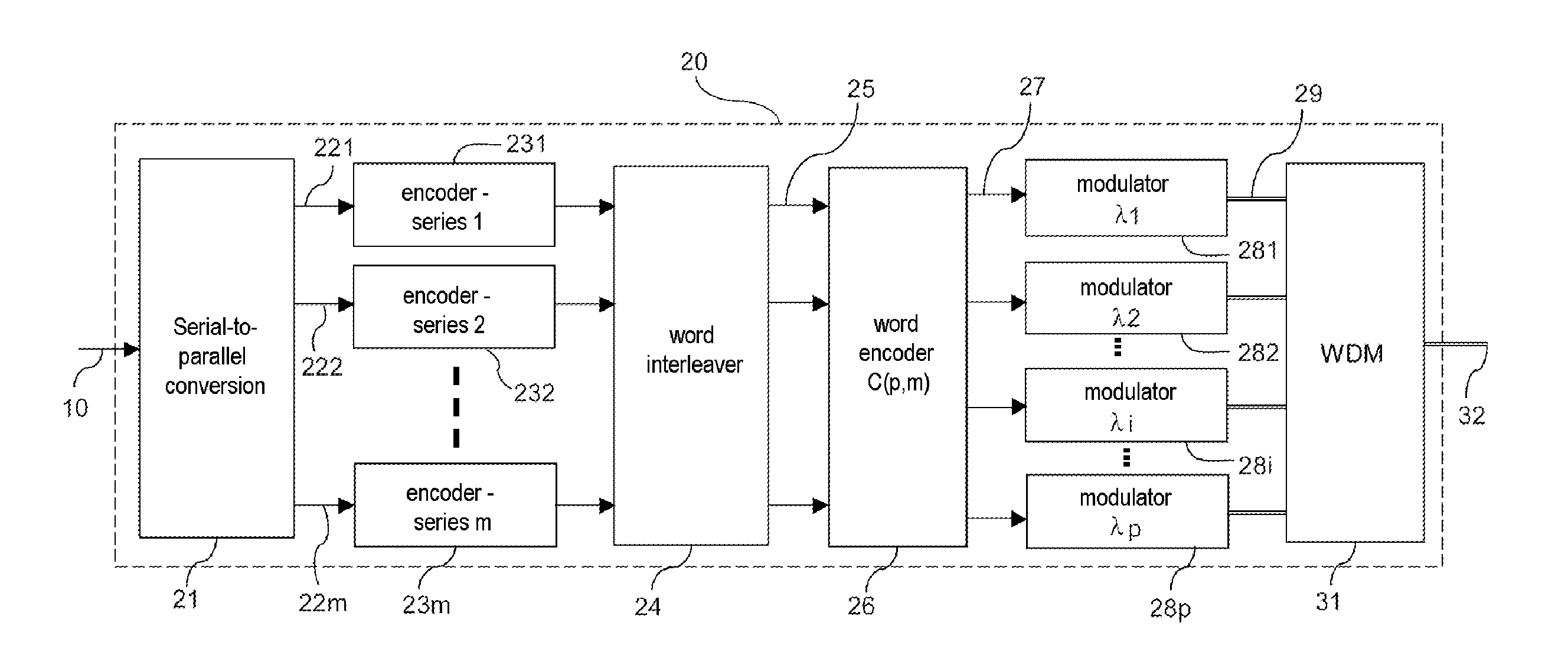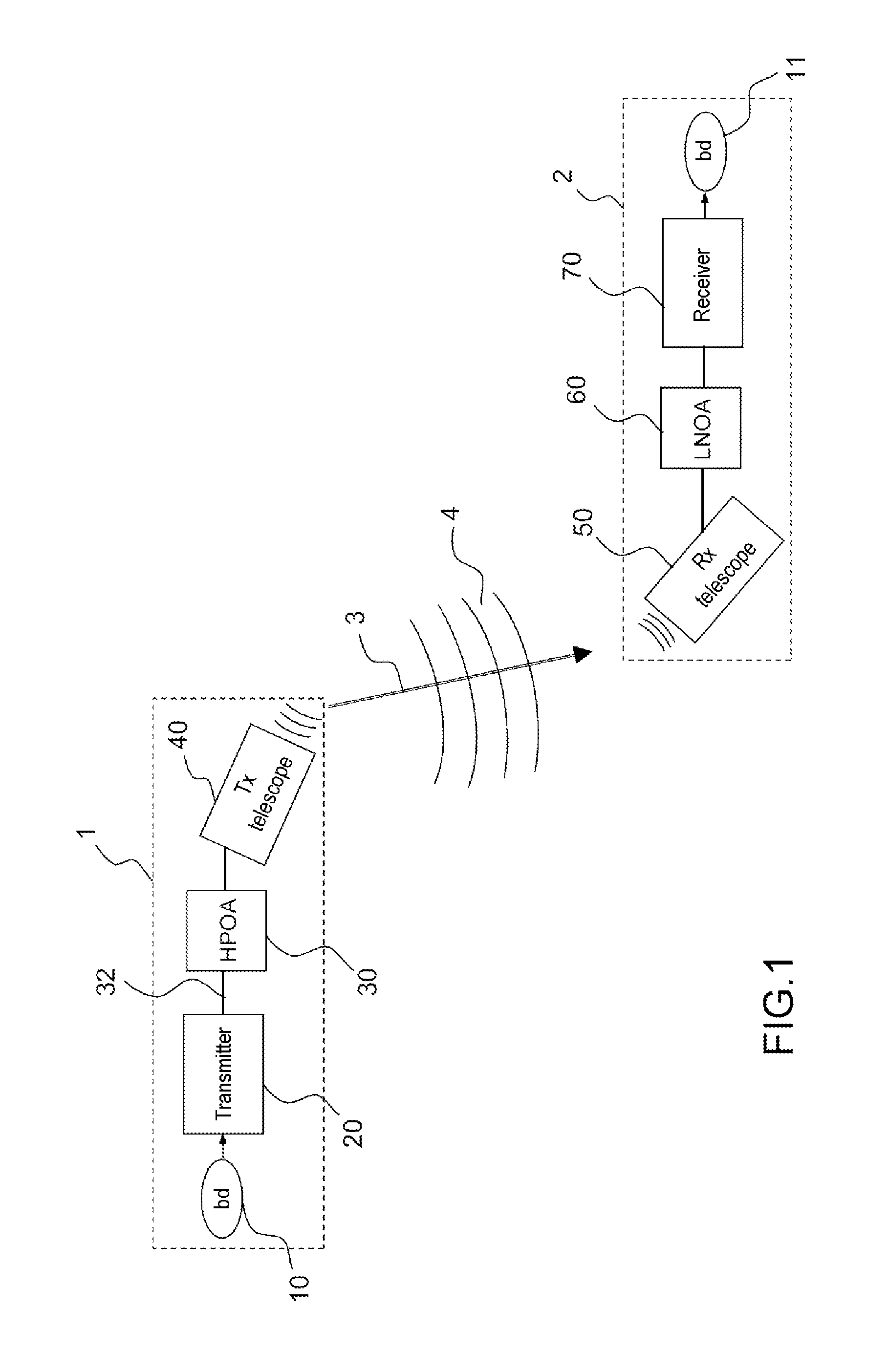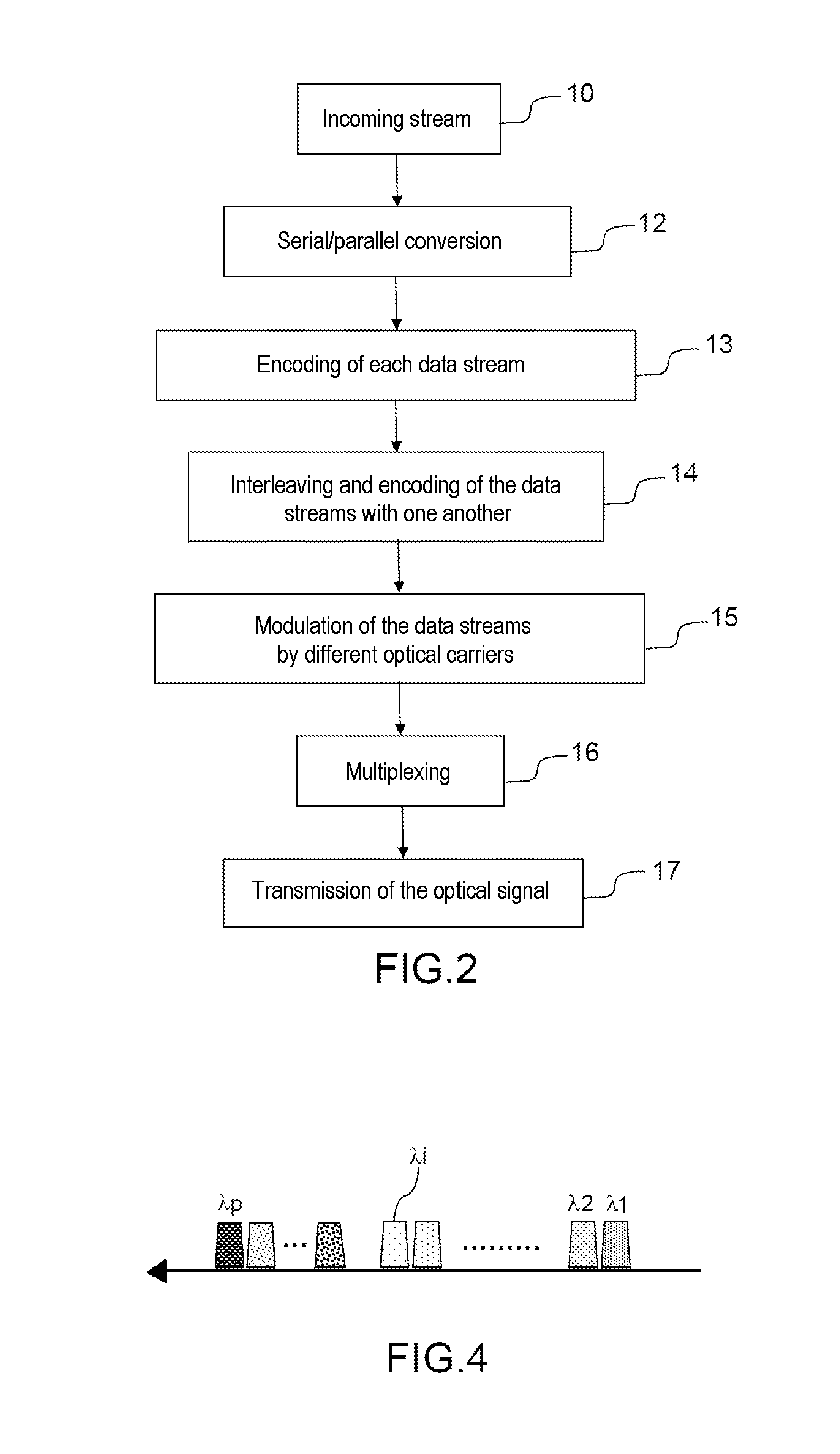Method for transmitting and method for receiving a binary data stream, transmitter and receiver for carrying out the method
a technology of binary data and transmitting method, which is applied in the direction of multiplex communication, code conversion, etc., can solve the problems of erasure of data, less effective coupling between the focus of the telescope and the input optical fibre of the receiver, and distortion of the wavefront of the laser beam
- Summary
- Abstract
- Description
- Claims
- Application Information
AI Technical Summary
Benefits of technology
Problems solved by technology
Method used
Image
Examples
Embodiment Construction
[0039]As shown in the diagram in FIG. 1, according to the invention, the system for transmitting a binary data stream comprises, on transmission, connected in series, a binary data source 10, a transmitter 20 comprising means for encoding and demodulating a binary data stream incoming via a plurality of optical carriers modulated at different wavelengths, an optical power amplification chain 30 and a first telescope 40 suitable for transmitting an optical signal 3 made up of the modulated optical carriers at different wavelengths. On reception, the binary data transmission system comprises a second telescope 50 suitable for receiving the optical signal transmitted by the first telescope 40, a low-noise amplification chain 60, a receiver 70 comprising demodulation and decoding means suitable for reconstructing the binary data stream 11. The binary data source 10 may, for example, be made up of an imager or a data recorder. In the case of a system for transmitting a binary data stream...
PUM
 Login to View More
Login to View More Abstract
Description
Claims
Application Information
 Login to View More
Login to View More - R&D
- Intellectual Property
- Life Sciences
- Materials
- Tech Scout
- Unparalleled Data Quality
- Higher Quality Content
- 60% Fewer Hallucinations
Browse by: Latest US Patents, China's latest patents, Technical Efficacy Thesaurus, Application Domain, Technology Topic, Popular Technical Reports.
© 2025 PatSnap. All rights reserved.Legal|Privacy policy|Modern Slavery Act Transparency Statement|Sitemap|About US| Contact US: help@patsnap.com



